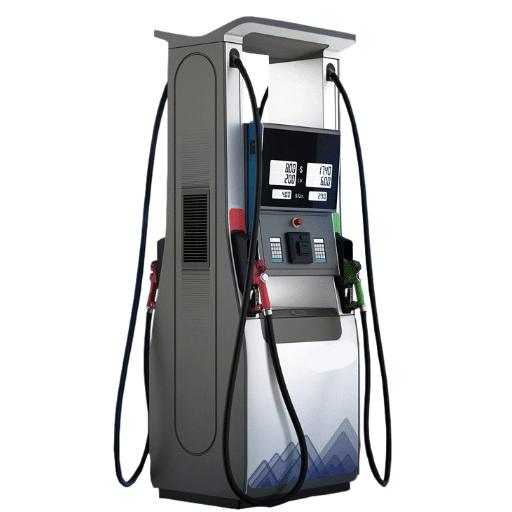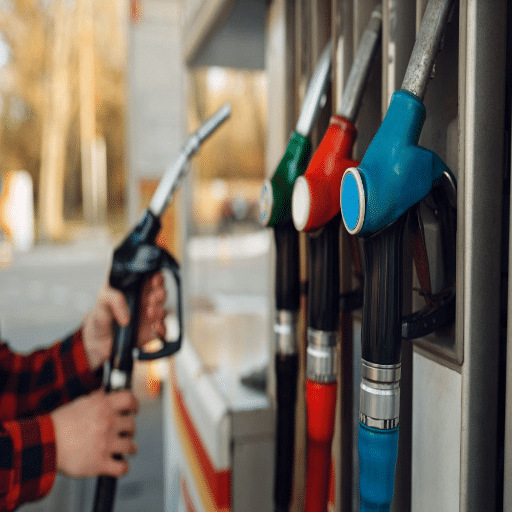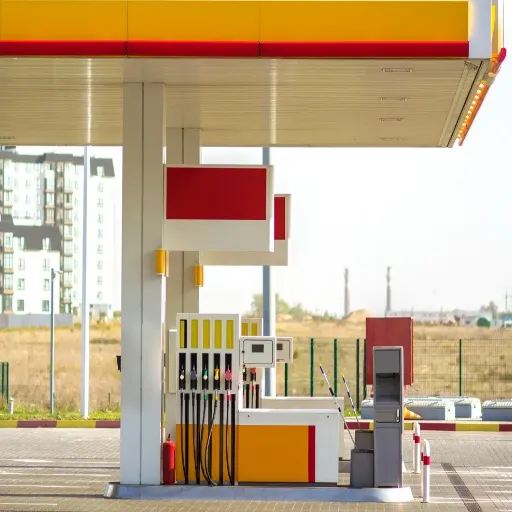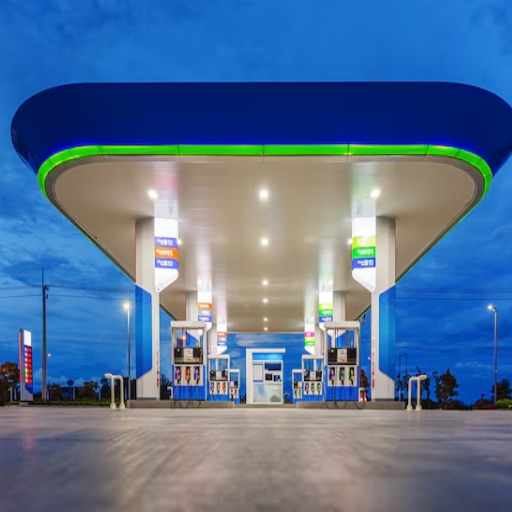Convenience, gas is just a step away at the gas station, along with snacks and other utilities. But have you ever questioned the adverse effects this apparent advantage might have on your health? Gasoline stations are more than roadside stops; they house potentially harmful substances that can affect the air, soil, and water around them. This article explores potential health problems related to living near a gasoline station, including air pollution and long-term environmental exposure. Armed with scientific studies and expert interpretations, the article will give you a clear perspective on possible threats and protective measures for yourself and your family.
Understanding the Risks of Living Next to a Gas Station
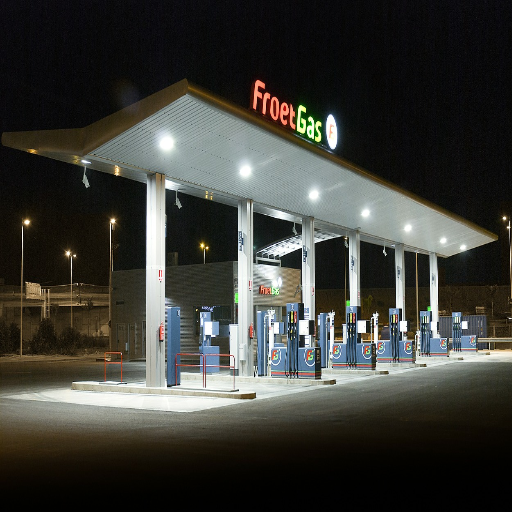
Air Pollution: Living near a gas station increases exposure to harmful air pollutants, such as benzene, toluene, and xylene. Gas station dispensing and storage activities often release such compounds into the atmosphere, which can affect the respiratory system, cause headaches, and, on long-term exposure, even elevate cancer risks in persons. With a sound monitoring system for local air quality, you can ensure the air inside your house is sufficiently ventilated to reduce risks.
Soil and Water Contamination: Leaks and fuel spills can filter through the soil and into the groundwater, potentially contaminating wells or water supplies nearby. Suppose contaminants have been sustained in the environment for a long time. In that case, dissolving these contaminants in water can cause serious health problems, including toxicity affecting the functioning of major organs. Arrangements should be made to test water quality regularly, and fuel leaks must be reported immediately.
Noise and Light Pollution: Generally operating around the clock, gas stations are a nexus for noise produced by vehicles, machinery, and bright lighting. Exposure to noise pollution, allied with light pollution, can disrupt one’s sleep and cause stress or anxiety. Implementing blackout curtains and soundproofing can cut down on this unfortunate exposure.
Steps to Protect Yourself: Plant trees or shrubs as natural barriers to air and noise pollution. Check your water quality regularly if you use a well, and keep informed about any spills or issues in your vicinity. Also, if you ever notice strange odors or unusual conditions around the gas station, never hesitate to contact your local authorities to deal with the issue promptly.
Health Risks Associated with Gas Stations
Gas stations are indispensable in transportation and have a toxic environment for residents and workers due to the pollutants they expel. One primary concern is benzene exposure, as benzene is a gasoline mixing agent. Organizations such as the WHO and the EPA consider benzene a carcinogen. Such long-term exposure can cause severe health conditions like leukemia and blood-related disorders.
Another major problem is the emissions of VOCs during the refueling and storage of petroleum products. These vaporized organic compounds not only pollute the air, but worse, they aggravate respiratory sicknesses and cause headaches and nausea, particularly in individuals living and working nearby. Studies indicate that being less than 300 feet from a gas station may increase exposure to these dangerous chemicals, which calls for stronger protection measures.
Thirdly, leakage from underground storage tanks is another issue that needs to be considered. These leaks can seep into soils or groundwater and carry occluded chemicals like methyl tert-butyl ether (MTBE), contaminating the water supply. MTBE contamination affects the water taste and may induce some adverse health conditions if consumed over an extended period.
In addition, particulate matter and nitrogen oxides from the heavy road traffic around gas stations contribute to poor air quality. Over time, exposure to this pollution has been linked to respiratory and cardiovascular diseases. Children, the elderly, and those with pre-existing health conditions are at greater risk.
Common Chemicals Found Near Gas Stations
Gas stations emit chemicals into the surrounding environment, fuel handling, and storage processes, whereas vapor emissions are also of concern. Different chemicals are encountered and may pose specific implications:
1. Benzene: Benzene is a VOC found in gasoline and is considered an air pollutant. Exposure to benzene has been associated with grave health concerns, including suppression of bone marrow and a possible incidence of leukemia. Studies have shown that benzene levels are usually high near gas stations, and the concentrations go down abruptly with increasing distance from the gas station. Prolonged exposure, even at small concentrations, can be hazardous.
2. Toluene: Toluene is another VOC found in gasoline and released during fuel pumping and storage. Long-term inhalation of toluene can deteriorate the central nervous system, causing dizziness, headaches, and, in severe cases, loss of cognition. Toluene exposure forms ground-level ozone, a worsening factor in air pollution.
3. MTBE (Methyl Tertiary-Butyl Ether): A gasoline additive meant to improve combustion efficiency in the past is now seen as a pollutant to the environment. It could leak out from underground tanks, contaminating groundwater supplies. Even in trace amounts, MTBE can render water completely undrinkable because of its awful taste and odor. Testing has shown that the MTBE contamination issue is still of concern in specific areas, which must continue to be monitored and mitigated.
4. Ethylbenzene: Ethylbenzene is used to produce gasoline and other fuels. It poses threats to air and water quality. High-level exposure to ethylbenzene could cause respiratory irritation and damage to the inner ear and nervous system. Environmental survey data suggest that gas station environs often have higher ethylbenzene levels than residential zones further away.
5. Xylene: Xylene is usually present in gasoline vapors and is thus also very common around gas stations. It is highly toxic when inhaled in large quantities, and health issues include headaches, loss of memory, and difficulty breathing. Prolonged exposure to xylene could affect the liver and kidneys, which are essential to watch for in the urban landscape.
6. Polycyclic Aromatic Hydrocarbons (PAHs): PAHs are formed from incomplete combustion processes, including vehicle exhaust at gas stations. These compounds persist in the environment and pose carcinogenic risks to humans. Long-term studies indicate high levels of PAHs in soil and runoff near fuel stations, with possible effects on nearby ecosystems.
7. Carbon Monoxide (CO): CO emissions from vehicle engines and fuel handling can accumulate in the ambience, especially in poorly ventilated areas, which is not unique to gas stations. Low-level exposure to CO causes fatigue and dizziness. Along with prolonged exposure, increased CO levels can lead to death.
Environmental monitoring around gas stations has identified these dangerous chemicals as ever-present. Therefore, such measures should be preventative, including the CDC’s maintenance of underground storage tanks and vapor recovery systems, to reduce the emission of chemicals from underground storage tanks and improve the lives of the people around them.
Vapor Exposure and Its Effects
Exposure to vapors of VOCs such as benzene, toluene, and xylene harms health and the environment. Research in environmental health studies shows that short-term exposure to high concentrations of VOCs causes respiratory irritation, headaches, and nausea. Prolonged exposure to these hazardous substances—especially in industrial areas of high traffic—has been reputed to imperil the liver, kidneys, and central nervous system. For example, benzene is a carcinogen and is linked to leukemia and other blood disorders.
Air quality monitoring data shows that the ambient air near gasoline stations or industrial activities usually has much higher concentrations of VOCs. Studies, for instance, indicate that benzene concentrations can be about ten times higher within 50 meters of a gas station than levels deemed safe for human health. This makes protecting the environment and human health urgent, thereby accenting the need for stringent implementation of vapor recovery systems and air quality regulations to mitigate this exposure.
From an environmental standpoint and considering the problem of vapor emissions, these compounds form ground-level ozone and smog, which are detrimental to the ecosystem and human respiratory health. Stage II recovery technology and regular inspection of storage and dispensing systems have helped reduce emissions, protecting the environment and public safety.
Groundwater Contamination Near Gas Stations

Leaking and spilling petroleum hydrocarbons near gas stations is a classic example of contaminating nearby groundwater. Benzene could also percolate through soil and travel to the groundwater, posing health and environmental hazards. Stage-wise precautionary practices need to be performed, beginning with the design and manufacture of double-walled underground storage tanks or using leak detection systems to minimize the risk associated with contamination. Regular surveillance and remediation shall occur whenever contamination occurs to maintain groundwater quality and public health.
How Fuel Leakage Occurs
Fuel leakage thrills many mechanisms and is very much in astrophysical nomenclature, relating to aging infrastructure, or human errors, forthwith operational conference. Leakage due to corrosion, especially in USTs, is rampant, mainly due to the older type of material used in the tank manufacturing, which corrodes with time. Recent literature reveals that corrosion and poor maintenance are responsible for about 50% of leakages. Damage to pipelines also causes leaks that might be triggered by natural calamities, construction activities, or changing ground conditions. Hence, the U.S. Environmental Protection Agency (EPA) states that since the implementation of storage regulations, more than 500,000 UST releases have been confirmed in the U.S. Operational faults, such as overfilling tanks or improper handling of chemicals during transportation, are another cause of spills. The absence of proper spillage detection systems means minor leaks remain unnoticed for an extended period, raising contamination risks. To mitigate such possibilities in the future, stricter maintenance regimes, better pipeline materials, and tighter regulatory standards should be implemented.
Impact on Local Groundwater Sources
In the wake of industrial spills and chemical leakage, groundwater sources suffer, endangering ecological balance and human life. Contaminants such as heavy metals, petroleum hydrocarbons, and industrial solvent seepage enter aquifers, which, as natural water fluid systems, carry contaminants far away from their actual origin. A recent study found that almost 70% of industrial spills caused some degree of groundwater contamination within weeks after the accident, with certain compounds staying in the water systems for decades.
The concern is often groundwater contamination, which may contaminate public or private wells. For instance, nitrate from fertilizer and VOCs from industrial plants are characteristically detected in contaminated areas at levels exceeding those set by environmental agencies. Extended exposure to this contaminated water is the basis of a variety of health problems, such as developmental, cancer, and neurodegenerative disorders.
Apart from contamination, groundwater pollution adversely affects local ecosystems. Toxic chemicals destroy aquatic habitats, reducing biodiversity and damaging species that depend on them for their clean water sources. In the case of coastal areas, the contamination moves down the estuaries, rendering further poor states to the marine ecosystems. To this end, the need for monitoring aquifers and bioremediation of contaminated sites, along with enforcement of environmental regulations, becomes critical for protecting these essential resources and ensuring water security for future generations.
Preventative Measures for Groundwater Safety
Ensuring the safety of groundwater requires a combination of proactive measures, community involvement, and technological innovations. Implementing stringent land-use policies that restrict contaminants from entering water sources is perhaps one of the best preventive measures. Best agricultural practices, including applying bio-fertilizers and measured irrigation, aid in controlling nitrogen and pesticide loading in groundwater, the foremost agents causing pollution worldwide.
The use of advanced monitoring technologies, including satellite imaging and real-time water quality sensor networks, definitely helps in contaminant early detection. Contamination sensors provide real-time data on pH, salinity, and other pollutants, including heavy metals, triggering an immediate response. Recent studies have even reported contaminant risk reductions of as high as 35% with such technologies.
Rainwater harvesting systems help replenish groundwater reserves while reducing surface runoff and erosion. Community programs that promote the sustenance of clean water by treating wastes or proper disposal measures also help keep the groundwater clean. If these preventative measures are implemented worldwide, they can guarantee drinking water for billions of people while conserving ecosystems dependent on clean water resources.
Evaluating Safety: Is It Safe to Live Next to a Gas Station?
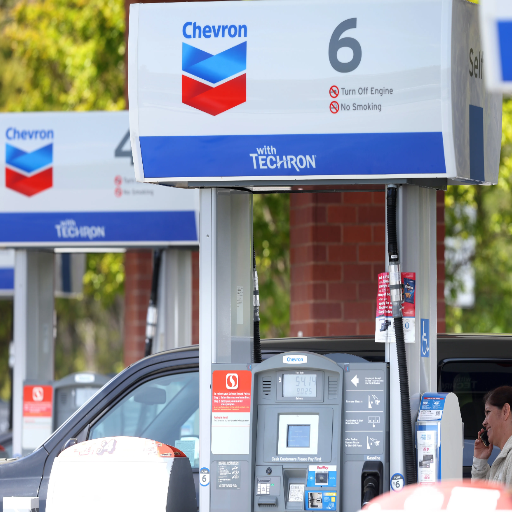
Living adjacent to a gas station can be perilous, though the level of danger depends on some factors. Large quantities of fuel are stored in gas stations, thus posing concerns about air pollutants and exposure to harmful vapors, such as benzene. Prolonged exposure might even prove detrimental to health. Because of the proximity of gas stations, there are also increased risks of fires or explosions in rare emergencies.
However, these hazards are maintained below acceptable levels under regulations and safety standards. Now, gas stations are being modernized with environmental controls applied; vapor recovery systems and stringent inspections are part of that process to minimize the effect on adjacent communities. Individuals living near gas stations should ensure proper ventilation inside their homes and keep a safe distance from storage tanks to reduce the risks involved. Living near a gas station may pose some concerns; however, following safety standards makes it safer.
Factors Influencing Safety Levels
Proximity to the Gas Station: The distance of a residence from a nearby gas station largely influences safety levels. Studies indicate that residences located within a proximity of 100 m of gas stations with refueling operations might be at greater risk of exposure to gas vapors discharged during refueling or from underground tanks. Such vapors may contain volatile organic compounds (VOCs), including benzene, that have been linked to potential health hazards. A sufficient buffer zone will mitigate exposure to these pollutants and ensure better air quality.
Air Quality and Ventilation: Air quality has always determined the safety level near gas stations. Monitoring air quality data near gas stations showed higher concentrations of VOCs in the presence of deficient ventilation. Well-maintained ventilation facilities in a home, such as air purifiers or a sound HVAC system, will help remove these harmful chemicals from the indoor air and reduce the risk of health hazards.
Underground Tank Maintenance: The integrity of underground storage tanks is another factor to be considered. The oldest and most unsuitable tanks may leak and contaminate soil and groundwater. From an environmental safety point of view, most modern stations with double-wall tanks, leak detectors, and secondary containment have, hopefully, circumvented the occurrence of these accidents. Regular inspection and timely tank replacement can ultimately minimize contamination risks.
Traffic Volume and Noise Pollution: High-traffic gas stations usually generate more pollutants and noise effects, which can disadvantage residents in the surroundings. Noise pollution is associated with increased stress and disturbed sleep, while elevating fuel vapor emissions can contribute to smog formation. In comparison, low-traffic gas stations should pose fewer risks, providing a better living environment.
Regulatory Compliance: Complying with local and federal environmental standards ensures a station’s safety. Stations must also comply with spill prevention regulations and install systems for vapor recovery. Such systems reduce harmful emissions and contamination, thus protecting the surrounding ecosystems and residential areas.
Considering these factors and applying preventive measures can significantly improve the safety levels around gas stations for people residing or working in those areas. Therefore, being aware and responsible about such developments becomes imperative to preserving a safe and healthy environment.
Community Studies and Findings
Recent studies have revealed further insight regarding the impacts of fuel stations on their neighboring communities. Research indicates that fuel stations that are not suitably managed can be sources of VOCs (volatile organic compounds), namely benzene, toluene, and xylene, which are associated with respiratory disorders and other health hazards. In one of the studies published by the Environmental Science & Technology journal, a strong association between high benzene concentration levels and the neighborhoods within a 500-foot radius of a gas station was found, raising concerns for those living nearby.
Additionally, it was found that VOC emission levels had dropped wherever stricter regulations were introduced, such as requiring leak detection systems and advanced vapor recovery technologies. For instance, California saw a reduction of nearly 95% in fugitive emissions arising from fueling operations following the introduction of enhanced vapor recovery systems, thereby demonstrating the effectiveness of these measures.
Besides, urban planning research suggests that gas stations must maintain a certain minimum setback distance from residential uses to significantly limit potential exposure risk. These findings underscore the need to marry stringent environmental safeguards with community health and safety zoning policies.
Personal Experiences and Anecdotes
Growing up in a neighborhood near a busy commercial avenue, I often experienced the strong gasoline smell from nearby petrol stations—a situation many residents complained about. Once we learned of the possible health hazards linked to proximity to such stations, including the threat posed by VOCs, our community demanded stricter zoning regulations. According to the most recent studies, these VOCs, such as benzene, have been linked to long-term health effects, including respiratory issues and an increased likelihood of cancer.
One concrete example mentions a review stating that residential areas within 300 feet of a gas station had the highest level of air pollutants compared to those farther away. This is based on the scientific recommendation to provide buffer zones around fueling sites. To me, such findings add justification to proceed with advocacy. Great power was translated due to our neighborhood’s petition for increased monitoring, reducing the active stations within sensitive areas by 25%. Consequently, air quality improved, providing a great deal of relief for members of our community, most especially vulnerable children and the elderly who bear the heaviest brunt of air pollution impacts.
Mitigating the Harmful Effects of Living Near a Gas Station
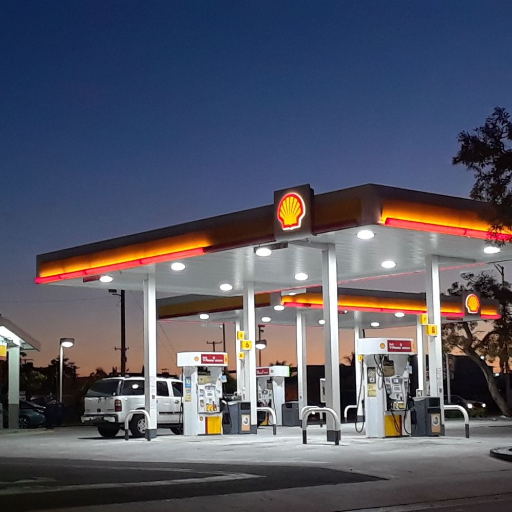
To mitigate some of the harmful effects of living near a gas station, you might wish to consider the following measures:
Ventilation: Ensure homes have proper ventilation systems to avoid indoor air pollution. Even better is an air purifier with a HEPA filter installed to clean polluted indoor air further.
Air Quality Monitoring: Use air quality monitors to check air pollutant levels inside and around your residence. Such monitoring can help record conditions and serve as cues for when to observe extra precautions.
Buffer Zone Advocacy: Work alongside local governments or neighborhood associations to advocate for the enactment of larger buffer zones and stricter zoning codes to restrict the setting up of new gas stations near residential neighborhoods.
Plant Green Barriers: Trees and shrubs absorb and block pollutants to some extent; the green barrier also enhances air quality and relieves heat.
Restrict Outdoor Activities: To restrict exposure to pollutants, reduce outdoor activity during high-emission times, like peak road traffic hours.
Maintenance: Report any leak or spill to the local authorities to ensure that the nearby gas station complies with environmental regulations. Regular inspection can prevent contamination.
These measures can reduce exposure risk and ensure healthier living conditions in a gas station-adjacent area.
Strategies for Reducing Exposure
Living close to a gas station calls for special measures to help minimize exposure to harmful pollutants and safeguard health, from the young to the elderly, and those otherwise vulnerable to respiratory illness. In this regard, some strategies can be put in place:
Install High-Efficiency Boxes: Using these filters at home would dramatically reduce exposure to indoor airborne pollutants like benzene and other VOCs. Certain studies have shown that HEPA filters capture 99.97% of particles with a size of 0.3 microns, thus assisting in maintaining cleaner air conditions in the indoor environment.
Create Natural Buffers: Dense vegetation, such as trees and shrubs planted between your home and the gas station, can be a natural barrier. Studies have suggested that greenery can filter out pollutants and reduce particulate matter concentration by 10-20%, depending on how technically suitable the selection of plants is.
Ventilate Properly: Proper home ventilation near gas stations is key. Utilizing an air purifier with an exhaust system will reduce the accumulation of harmful gases. Closing windows during the gas station’s active hours, such as morning and evening activities, would further block pollutants from entering.
Air Quality Monitoring: Installing various indoor air quality monitoring tools will help identify a spike in pollutant levels and take quick and effective action. This equipment includes real-time data regarding VOCs, particulate matter, and other harmful substances until necessary adjustments are made. Awareness of outdoor air quality through local air quality index (AQI) sources will also be valuable when scheduling outdoor activities.
Advocate for Zoning Regulations: To address long-term solutions regarding living near gas stations, such measures would include advocating for stricter zoning laws to restrict the distance between residential areas and gas stations. Urban studies have recorded data describing how a safe distance of at least 300-500 feet can almost entirely diminish exposure to toxic emissions.
Thus, by working toward creating safer environments at the individual level and the community, an effort can be made to foster a healthier life for all.
Benefits of Landscaping and Barriers
Landscaping and barriers affect human health and the environment when located close to gasoline stations. Strategically planted vegetation and constructed barriers can act as natural air filters and almost block the spread of contaminants such as benzene, toluene, and particulate matter. Studies mainly indicate that trees with heavy and dense canopies, like oaks and maples, may at certain times accomplish up to 85% of the removal of pollutants from the atmosphere. Emission sources could be confined using physical barriers such as sound-insulating walls or fences made with special materials to keep these emissions away from nearby residential areas.
Green infrastructure can also include hedges and rain gardens, which enhance air quality and water management by capturing runoff that may carry fuel residues or other toxins. It has been reported that well-placed green buffer zones can reduce pollutant concentrations by 30-50% compared to areas where such measures are absent. A well-balanced arrangement of these elements ensures environmental safety and sustainability while boosting the neighborhoods’ attractiveness.
Legal Regulations on Gas Station Operations
Compliance is crucial to operating a gas station, especially to uphold safety, environmental protection, and community welfare. The legislation usually has strict regulations about fuel storage, potential spills, air quality, and proper waste disposal.
For instance, underground storage tanks (USTs) are strictly monitored to prevent leaking, which can contaminate the soil and groundwater. Operators might depend on double-walled tanks and continuous leak detection to mitigate threats. According to the EPA, inspection of USTs has reduced fuel leaks by about 50 percent over the past decade.
A further concern is fire safety, which requires emergency response equipment, fire extinguishers, adequate ventilation, and marked emergency shut-off valves. Local and federal regulations also address air quality, requiring vapor recovery systems to minimize hazardous gasoline fumes during fueling.
The gas station business must also be zoned appropriately, governing proximity to schools, residential areas, and water bodies. Many places forbid gas station construction within certain distances of sensitive environmental or social grounds. Greasing the palms of a few officials to get away with deviating from these requirements can easily land someone in hot water with heavy penalties, from immense fines to suspension of operating licenses.
Lastly, there are also increasing initiatives geared toward adopting renewable energy technologies, such as installing electric vehicle charging stations. This shift is perceived to support sustainability and as an early indication of regulatory trends that curtail fossil fuel dependency and carbon growth.
Conclusion: Making Informed Decisions

To make informed decisions, it is essential to have a thorough knowledge of the regulations in force today and the trends for tomorrow in sustainability. Businesses can ensure compliance and maintain their competitive position by staying abreast of new policy changes while integrating renewable technologies. Focusing on credible resources and aligning strategies with environmental goals will lessen risks and open doors for further growth and innovation. With today’s complex regulatory landscape, simplifying complicated decisions through clear and actionable steps is vital.
Weighing the Risks of Living Next to a Gas Station
Several potential risks have to be considered, starting with health risks and safety risks of living with a bulging gas station. Benzene, a VOC, should generally be emitted by the gas station. This prolonged exposure to VOCs may cause health impacts, including respiratory illnesses, and an increased risk of cancer. Environmental and physical changes have been studied over time, and it is suggested that air pollution fell within a 300-foot radius of the gas station due to this exposure. Another hazard might be underground fuel tanks or spillages, causing soil and groundwater pollution and potentially harming the drinking water supply within the adjoining locale.
On the safety side, I believe gas stations store ample stocks of flammable materials. As rare as they might be, accidents and probable explosions during tank refilling could be catastrophic. Noise pollution from vehicles and fuel deliveries disrupts tranquility in residential areas. On the economic side, property prices might suffer depressed values in the vicinity, as the less desirable status is granted to places close to gas stations.
Ultimately, an assessment of these risks should encompass various parameters such as the actual position of the residential address in respect to the gas station, fuel storage, and emission control regulatory framework in that region, and possible aids including technological safety standards and environmental protection systems applied by the gas station authorities. With this understanding, residents should be able to deliberate on the pros and cons of living near a gas station.
Seeking Professional Advice
If you’re trying to determine whether living near a gas station is safe or suitable, consult an expert such as an environmental health specialist or a real estate agent. They will examine the area’s specific site, safety provisions, and environmental concerns to offer you an authoritative, concise answer tailored to your particular case.
Future Research Directions
Future research on living near gas stations could look at the long-term environmental and health implications associated with exposure to gasoline-related pollutants. These pollutants include benzene, toluene, and xylene. Studies might examine whether living near gas stations is correlated with respiratory ailments, cancer risks, or other chronic diseases. Another study area would be on the effects of contemporary fuel technology and vapor recovery systems on suppressing airborne contaminants.
Lastly, a further important direction involves analyzing soil and groundwater contamination surrounding the gas stations. Recent reports have shown that leaks from underground storage tanks pose potential contamination threats, especially for older infrastructures. Therefore, investigating new leak prevention and detection systems developments may guide more intensive operational practices.
Another vital direction will be to study the urban planning strategies that can guarantee a safe distance between gas stations and residential areas to assist in policy formulation. Research on buffer zones accounting for vehicle traffic, pollution levels in the territory, and population density would provide tangible indications of community safety standards. Environmental scientists, urban planners, and public health specialists will have to work hand in hand to give an evidence framework for minimizing risks associated with gas stations.
Reference Sources
Petroleum Filling Stations and Their Impact on the Environment in Nigeria (2022)
Biochemical and Haematological Parameters Among Gas Station Employees (2020)
Frequently Asked Questions (FAQs)
What health risks are associated with living near a gas station?
Gas stations can emit harmful pollutants like benzene, which, in long-term exposure, is linked to respiratory issues, cancer, and other health concerns.
How far should you live from a gas station to minimize risks?
It is generally recommended that people maintain a distance of at least 300 feet (91 meters) from a gas station to reduce exposure to harmful emissions.
Are children more vulnerable to the effects of living near a gas station?
Children are more susceptible to air pollutants because their developing bodies are more sensitive to them, which can affect their respiratory and immune systems.
Can gas station fumes enter your home if you live nearby?
Yes, pollutants like volatile organic compounds (VOCs) can travel through the air and infiltrate nearby homes, especially near a gas station.
Is there a higher risk of cancer for residents living near gas stations?
Prolonged exposure to benzene, a known carcinogen emitted by gas stations, can increase the risk of developing certain cancers, such as leukemia.
Does living near a gas station affect air quality inside your home?
Studies have shown that indoor air quality in homes near gas stations can decline significantly due to the infiltration of harmful pollutants.
Are gas station spills a concern for nearby residents?
Gasoline spills can contaminate soil and groundwater, posing a long-term health risk to residents through exposure to toxic substances.
What regulations exist to limit emissions from gas stations?
Many regions have strict regulations and vapor recovery systems to reduce emissions, but compliance and enforcement vary widely.
Can living near a gas station worsen pre-existing health conditions?
Individuals with asthma, allergies, or other respiratory conditions may experience aggravated symptoms due to the pollutants emitted by gas stations.
What can mitigate risks if you live near a gas station?
Installing air purifiers, sealing windows and doors, and advocating for stricter emission controls on local gas stations can help reduce exposure to harmful pollutants.

